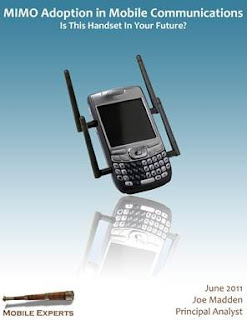Wireless Technology Expert Jonathan Wells reports that at mid-2011 the high capacity wireless market segment continues to grow in strength. All the carriers are now advertising 4G networks and claiming super-fast download speeds. High-capacity gigabit wireless products are being deployed in both the microwave and mm-wave frequency bands to address the backhaul demands of these networks.
Over 1 million microwave radios in 2010
Although 2010 saw a drop in overall PTP radio shipments, high capacity solutions remains the shining sector. EJL Wireless reports that of the almost 1.1 million PTP radios shipped last year, 75% of them are in the high capacity product segment. Leading high capacity vendors such as Aviat Networks, Ceragon and Dragonwave all have microwave products that can now deliver almost 1 Gbps true data throughput in the regulated microwave channels.
$500+ million mm-wave market
The 60 GHz and 70/80GHz bands, which permits multi-gigabit transmission, remains the fastest growing market segment. EJL Wireless forecast radio shipments in this sector grew 67% in 2010. Leaders BridgeWave announced earlier this year that they have shipped their 10,000th mm-wave system, and have released a novel 60 GHz product for picocell backhaul. Visant Strategies have forecast that revenue from 60 GHz and 70/80 GHz PTP radios will reach over $500 million in 2016, citing growth from 4G base stations driving Gbps speed requirements in dense urban areas. Infonetics Research has published a more bullish prediction; that 70/80 GHz PTP equipment will grow to over $450 million by 2014.
For More Information
To better understand the high capacity microwave and mm-wave product landscape and the wider wireless technology implications, see his new book on “Multi-Gigabit Microwave and Millimeter-Wave Wireless Communications”. For more information, or to purchase a discounted copy of this book, click here …
Jonathan Wells, Ph.D. M.B.A.
President, AJIS LLC
Wireless Technology Consulting
Email: jonathan@ajisconsulting.com
Web: www.ajisconsulting.com
LinkedIn: www.linkedin.com/in/jonathanwells




